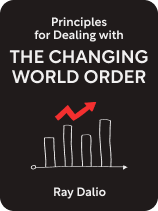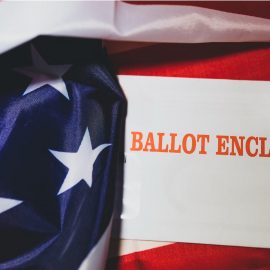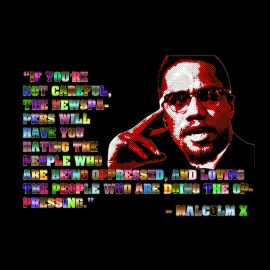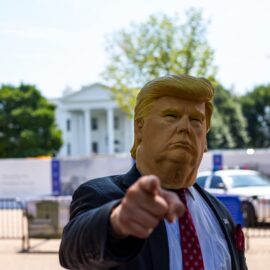

This article is an excerpt from the Shortform book guide to "Principles for Dealing with the Changing World Order" by Ray Dalio. Shortform has the world's best summaries and analyses of books you should be reading.
Like this article? Sign up for a free trial here.
Is the world locked in an endless cycle of conflict and cooperation? How do major powers shape the global landscape?
Ray Dalio’s insights on cycles of war and peace offer a fascinating perspective on international relations. He explores how nations interact, compete, and sometimes clash on the world stage. From economic battles to the looming threat of military confrontation, Dalio paints a vivid picture of the complex dance between global powers.
Keep reading to understand this characteristic of geopolitics, especially in regard to the United States and China in our current era.
Cycles of War and Peace
Much like a major power’s internal society, there’s an international order between different world powers. According to Dalio, this international order follows cycles of war and peace, progressing through peaceful times of building, growing, and peaking and times of overextending, declining, and dissolving through revolution or war.
However, while a nation can structure its society through enforceable laws and punishments that guide citizens’ behavior, there is no broadly enforceable legal system on the international scale. Instead, the major powers, with their large militaries, tend to act in their own interests. For instance, entities like the UN can’t outright control the US, which holds dominant military and economic power.
(Shortform note: Jason Hickel argues in The Divide that one way major powers assert their interests is through violent coups. Specifically, he discusses how in the 1970s and 1980s, the United States and some European countries intervened in countries such as Iran and Guatemala to remove leaders who didn’t serve their interests and to place Western-friendly dictators in positions of power. Ostensibly to fight communism, Hickel says that these interventions were in fact made in service of corporate interests, such as those of the United Fruit Company (in Guatemala) and British Petroleum (in Iran).)
Instead, only other powerful countries can exert influence on one another, like how the US and China must acknowledge one another as rival actors. And, Dalio suggests, wealth and power accumulate on the global scale much like they do within a nation. Mirroring the cooperation of wealthy individuals within a nation, wealthy nations tend first to seek win-win relationships to establish a geopolitical system that benefits them both. However, Dalio says they always devolve into conflict—typically when an ascending power wants to take the reins from a declining power. He describes five kinds of conflicts, ranging from economic fights over trade and tariffs, fights over access to technologies such as computer chips, disputes over borders and territories, conflict over international debt, credit, and bank access, and finally violent conflict, or “hot” war.
If violent war breaks out, the powers that “win” get to determine the new international order. For instance, the winning nations of WWI created the League of Nations, a short-lived international system that attempted to prevent another brutal, global-scale war.
(Shortform note: In recent history, the conflict between Russia and Ukraine is one prominent example of the descent of a geopolitical cycle into outright conflict. Some experts say that the conflict is the cumulation of decades of expansion of the North Atlantic Treaty Organization (NATO) into formerly Soviet territories—in other words, Ukraine became the flashpoint of a larger conflict between Western Europe and Russia, with Russia’s Putin intent on restoring Russia’s former control over Ukraine. Although the war likely won’t result in a total restructuring of the world order, Western relations with Russia are unlikely to return to normal, afterward.)
War-Peace Cycles in the US and China
In the global order, Dalio explains that the US and China are the two major powers to watch. He contends that they’re engaged in four of the five types of war: Economic, technological, geopolitical, and capital conflicts. For instance, both countries have long been engaged in tense diplomacy regarding activities in the South China Sea. These conflicts will intensify as China becomes more competitive as a global power.
Additionally, the US military remains the strongest in the world. However, China’s is nearly comparable and is growing, particularly across Asia—from the Koreas and Southeast Asia to India and Pakistan. Dalio estimates a 35% chance of a hot war within 10 years, and he says it would likely break out over Taiwan, a major pain point between the two powers. If we’re lucky, he says the tenet of “mutually assured destruction” may prevent outright military conflict on a global scale.
(Shortform note: In recent years, US-China relations have been fraught with tension over Taiwan, the world’s largest manufacturer of semiconductors and therefore a massive economic asset, as well as over a military arms race and looming elections in Taiwan. During the Trump Administration, US-China relations deteriorated, and while the Biden administration has been more diplomatic, no major issues have been solved. China’s intent to expand its nuclear arsenal remains a prominent concern for the US, and the possible reelection of Donald Trump in the US’s 2024 elections could also spell a return to deteriorating diplomacy.)

———End of Preview———
Like what you just read? Read the rest of the world's best book summary and analysis of Ray Dalio's "Principles for Dealing with the Changing World Order" at Shortform.
Here's what you'll find in our full Principles for Dealing with the Changing World Order summary:
- How to use patterns in world history to make better decisions today
- What may happen in the near future for the United States and China
- Why humans are stuck in a competition for wealth and power






